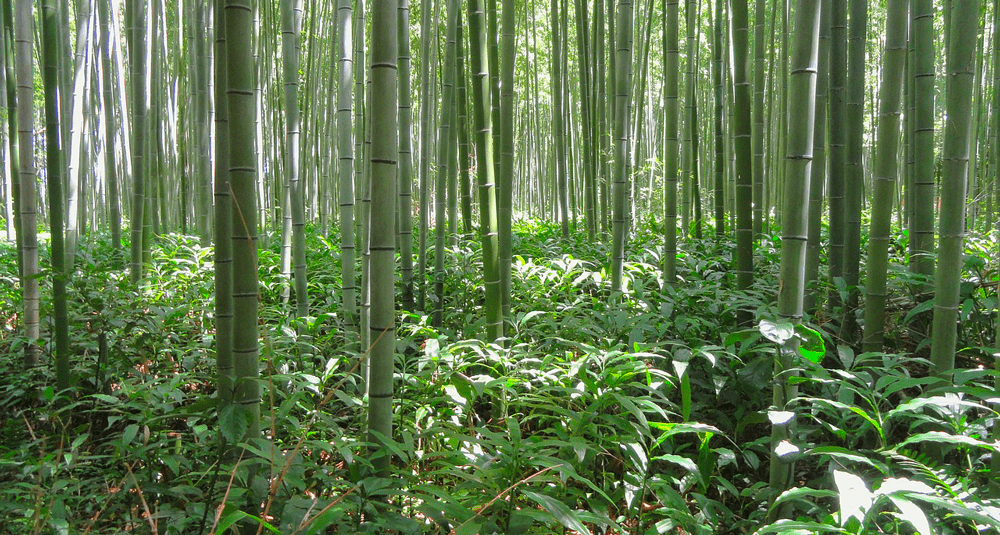Are bamboos trees?
Last Updated:
Contrary to what their appearance might suggest, bamboos are not trees. They are in fact giant herbaceous plants belonging to the Poaceae family, i.e. the grasses. This botanical family also includes such well-known plants as wheat, rice, corn and oats.
The keyword bamboo therefore refers to a large subfamily of woody grasses, grouped mainly in the tribe Bambuseae, which comprises over 1,400 species in dozens of genera.
The confusion arises from the fact that many bamboo species can reach impressive heights, sometimes exceeding 30 meters, and have a rigid stem, called culm, which resembles the trunk of a tree. From a botanical point of view, the distinction is clear:
- Trees are lignified plants, whose trunks are formed by secondary growth (formation of rings, thickening of the wood every year);
- Bamboos, on the other hand, have no secondary growth: their culms reach their final size very quickly, often within a few weeks, and then stop thickening.
Bamboos are therefore classified as herbaceous plants, even though they are among the largest in this category.
Bamboos have a number of characteristics that distinguish them from conventional trees:
- Rapid growth: some species, such as Phyllostachys edulis, can grow by more than a metre a day under ideal conditions. This makes them one of the fastest-growing plants in the plant world;
- Hollow stem: culms are generally hollow, separated by strong nodes. This light, flexible structure enables bamboos to resist wind and bending;
- Rhizome propagation: bamboos spread by underground rhizomes, which give rise to new shoots. They can therefore rapidly colonize an area, making them invasive;
- Rare flowering: some bamboo species flower only once every 20 to 100 years, and then die, a phenomenon known as monocarpic flowering. This reproductive strategy is exceptional among plants.
Despite their herbaceous nature, bamboos have applications similar to those of wood. Their strength, flexibility and lightness make them a material of choice for many uses:
Construction: frameworks, scaffolding, traditional houses in Asia;
- Furniture and objects: furniture, utensils, musical instruments;
- Textiles: fibers transformed into fabric or viscose;
- Food: young shoots edible in many Asian kitchens;
- Ecology: effective carbon sinks, soil stabilization, sustainable alternative to wood.
Visually, bamboos may look like trees: tall, straight and woody to the touch. But their internal structure, growth and botanical classification link them to the world of giant grasses, not trees.
Bamboos are not trees, but giant herbaceous plants belonging to the grass family. Their rapid growth, hollow stem and mode of propagation make them unique plants, halfway between grass and wood. Although they are often mistaken for trees because of their size and appearance, they are clearly distinguished from them by their botanical structure and biological functioning.
You may also be interested in
nature

Are bamboos trees?
Answer
Bamboos are not trees, but giant herbaceous plants belonging to the grass family, like wheat or corn.